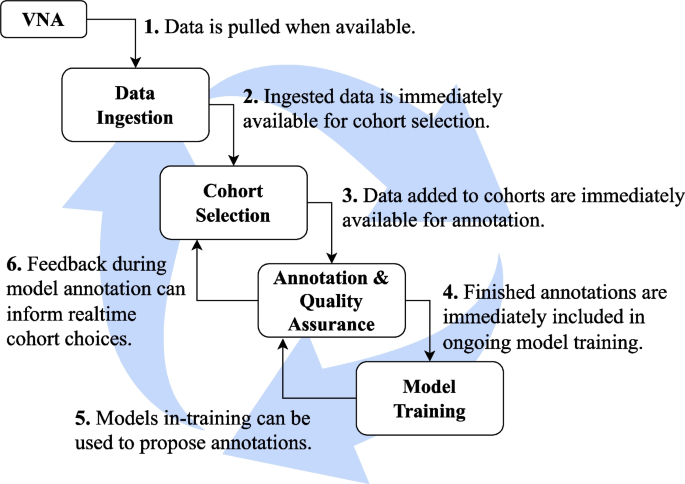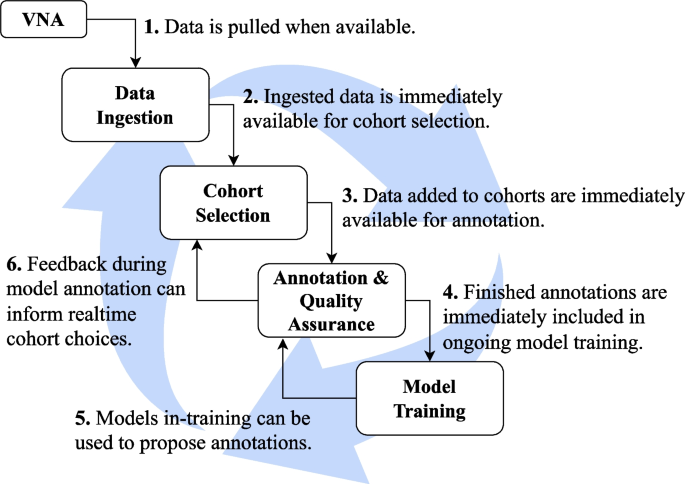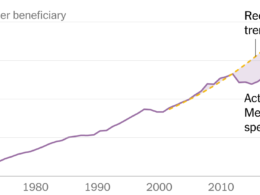health transformation institute (HTI)
the most comprehensive knowledge portal for health transformation
Joaquim Cardoso MSc*
Founder, Chief Researcher and Editor
November 27, 2022
MSc* from London Business School — MIT Sloan Masters Program
What is the message?
- Current AI-driven research in radiology requires resources and expertise that are often inaccessible to small and resource-limited labs. Current imaging data is clinician-oriented and is not easily amenable to machine learning initiatives.
- The authors present the system and methodology they have developed to address infrastructure and platform needs, while reducing the staffing and resource barriers to entry.
ORIGINAL PUBLICATION

An Orchestration Platform that Puts Radiologists in the Driver’s Seat of AI Innovation: a Methodological Approach
Journal of Digital Imaging
Raphael Y. Cohen & Aaron D. Sodickson
23 November 2022
Abstract
What is the context?
- Current AI-driven research in radiology requires resources and expertise that are often inaccessible to small and resource-limited labs.
- The clinicians who are able to participate in AI research are frequently well-funded, well-staffed, and either have significant experience with AI and computing, or have access to colleagues or facilities that do.
What are the imaging data barriers?
- Current imaging data is clinician-oriented and is not easily amenable to machine learning initiatives, resulting in inefficient, time consuming, and costly efforts …
- … that rely upon a crew of data engineers and machine learning scientists, and all too often preclude radiologists from driving AI research and innovation.
What is the proposal?
- The present the system and methodology they have developed to address infrastructure and platform needs, while reducing the staffing and resource barriers to entry.
- We emphasize a data-first and modular approach that streamlines the AI development and deployment process while providing efficient and familiar interfaces for radiologists, such that they can be the drivers of new AI innovations.
Current AI-driven research in radiology requires resources and expertise that are often inaccessible to small and resource-limited labs.
The authors present the system and methodology they have developed to address infrastructure and platform needs, while reducing the staffing and resource barriers to entry.
References
See the original publication
- Martin J. Willemink, Wojciech A. Koszek, Cailin Hardell, Jie Wu, Dominik Fleischmann, Hugh Harvey, Les R. Folio, Ronald M. Summers, Daniel L. Rubin, and Matthew P. Lungren. Preparing medical imaging data for machine learning. Radiology, 295(1):4–15, 2020. PMID: 32068507.
- W. D. Bidgood and S. C. Horii. Introduction to the ACR-NEMA DICOM standard. Radiographics, 12(2):345–355, 1992.
- Daniel Rubin, Mete Akdogan, Cavit Altindag, and Emel Alkim. ePAD: An Image Annotation and Analysis Platform for Quantitative Imaging. Tomography (Ann Arbor, Mich.), 5:170–183, 03 2019.
- Amine Barrak, Ellis E. Eghan, and Bram Adams. On the co-evolution of ml pipelines and source code — empirical study of dvc projects. 2021 IEEE International Conference on Software Analysis, Evolution and Reengineering (SANER), 2021.
- Fabian Isensee, Paul Jaeger, Simon Kohl, Jens Petersen, and Klaus Maier-Hein. nnU-Net: a self-configuring method for deep learning-based biomedical image segmentation. Nature Methods, 18:1–9, 02 2021.
- Alireza Mehrtash, Mehran Pesteie, Jorden Hetherington, Peter Behringer, Tina Kapur, William Wells, Robert Rohling, Andrey Fedorov, and Purang Abolmaesumi. DeepInfer: Open-Source Deep Learning Deployment Toolkit for Image-Guided Therapy. Proceedings of SPIE-the International Society for Optical Engineering, 10135:101351K, 03 2017.
Acknowledgements
The authors are grateful to Samantha Bloom for her work in developing and elevating the graphical design of the Tomosuite platform and to Sam Stern for many thoughtful conversations about server design and infrastructure.
Authors and Affiliations
Department of Radiology, Division of Emergency Radiology, Brigham and Women’s Hospital, Boston, 02115, USA
Raphael Y. Cohen & Aaron D. Sodickson
Harvard Medical School, Boston, 02115, USA
Aaron D. Sodickson
Cite this article
Cohen, R.Y., Sodickson, A.D. An Orchestration Platform that Puts Radiologists in the Driver’s Seat of AI Innovation: a Methodological Approach. J Digit Imaging (2022). https://doi.org/10.1007/s10278-022-00649-0
Keywords
- Medical imaging
- Artificial intelligence
- Distributed systems
- Cloud computing
- AI infrastructure
Originally published at https://link.springer.com on November 23, 2022.
Cite this article
Cohen, R.Y., Sodickson, A.D. An Orchestration Platform that Puts Radiologists in the Driver’s Seat of AI Innovation: a Methodological Approach. J Digit Imaging (2022). https://doi.org/10.1007/s10278-022-00649-0












